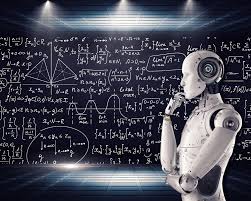Technology is advancing rapidly, and terms like artificial intelligence (AI) and machine learning (ML) are becoming more common. Many people use these terms interchangeably, but they are not the same. So, what is machine learning vs AI? Understanding the differences and how they work together can help clarify their roles in modern technology.
Defining Artificial Intelligence (AI)
Artificial intelligence is a broad field that focuses on creating machines capable of performing tasks that typically require human intelligence. AI involves programming computers to mimic human decision-making, reasoning, and learning.
There are two main types of AI:
- Narrow AI (Weak AI) – Designed for specific tasks, such as voice assistants (Siri, Alexa) or recommendation algorithms (Netflix, YouTube).
- General AI (Strong AI) – Hypothetical AI capable of understanding, learning, and performing any intellectual task a human can do.
AI systems use various methods, including rule-based programming, expert systems, and machine learning, to make intelligent decisions.
Understanding Machine Learning (ML)
Machine learning is a subset of AI that focuses on enabling computers to learn from data without being explicitly programmed. Instead of following predefined rules, ML models recognize patterns, make predictions, and improve over time.
There are three main types of machine learning:
- Supervised Learning – Uses labeled data to train models (e.g., email spam detection, fraud detection).
- Unsupervised Learning – Identifies hidden patterns in data without predefined labels (e.g., customer segmentation, anomaly detection).
- Reinforcement Learning – Improves decision-making by rewarding correct actions and penalizing incorrect ones (e.g., robotics, self-driving cars).
What Is Machine Learning vs AI? The Key Differences
While AI and ML are related, they are not the same. Here are the main differences:
- Scope – AI is a broader concept that includes ML as one of its approaches, while ML focuses specifically on learning from data.
- Functionality – AI can operate based on predefined rules or ML algorithms, while ML relies solely on data-driven learning.
- Goal – AI aims to simulate human intelligence, while ML focuses on improving task performance through data analysis.
- Implementation – AI includes multiple techniques like expert systems and deep learning, while ML is one of the methods used to achieve AI.
How AI and Machine Learning Work Together
Although AI and ML are different, they often work together. AI systems use ML algorithms to enhance their ability to recognize patterns, make decisions, and improve performance over time. Examples include:
- Chatbots – AI-powered chatbots use ML to understand user queries and provide better responses.
- Recommendation Systems – AI-driven recommendation engines (e.g., Spotify, Netflix) use ML to personalize content for users.
- Healthcare Diagnostics – AI-assisted medical imaging uses ML models to detect diseases like cancer.
Applications of AI and Machine Learning
Both AI and ML have widespread applications across industries:
- Healthcare – AI helps diagnose diseases, while ML improves predictive analytics.
- Finance – AI detects fraud, and ML enhances credit risk analysis.
- Retail – AI improves customer interactions, and ML personalizes shopping experiences.
- Automotive – AI powers self-driving cars, while ML refines driving models based on real-time data.
The Future of AI and Machine Learning
As technology advances, the relationship between AI and ML will continue to evolve. Emerging trends include:
- Explainable AI – Making AI decisions more transparent and understandable.
- Edge AI – Running AI models on local devices instead of cloud servers.
- AI Ethics – Addressing biases and ensuring responsible AI development.
Conclusion
So, what is machine learning vs AI? Machine learning is a crucial part of AI, but AI includes many other techniques as well. Understanding their differences and how they work together can help businesses and individuals make better use of these technologies. As AI and ML continue to develop, their impact on industries and daily life will only grow. You can also read the blogs like is machine learning part of ai.
